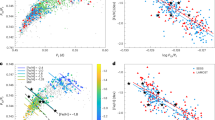Summary
TheIAU Symposium No. 61 (Perth, 1973, “New Problems in Astrometry’) makes clear that radiosources will play an important role for astrometry in view of the linkage of reference systems.
The purposes developed later were to link the various systems from the earth and the solar system to the most inertial possible one.
Extragalactic radiosources are the most reliable objects but they are faint. So, intermediate objects are needed. Among them the radiostars, optical objects having radioemission at a certain level and for given frequencies have a fundamental and key position.
Most of such radiostars are double or multiple ‘binaries’ as it can be seen from the list of reference stars issued by the Working Group of Commission 24, Working Group created in 1978. The last issue of the core list of radiostars was presented by Ch. de Vegt (Chairman of the WG) on the occasion of the last General Assembly of the IAU (November 1985).
A recent study of the system α Scorpii (Antares) has shown that the data concerning the magnitude and the spectral type are not accurate enough, according to the accuracy obtained for the astrometric position (±0 s. 003 for an astrolabe campaign in right ascension).
There is also a need for better knowledge about the orbits. In the case of the astrolabe observations, if the distance between the components in <3″ the astrometric position concerns the photocenter and accurate physical properties are needed for comparison with the radio position.
Better astrophysical properties are strongly needed for all radiostars to be used as references, during the time the astrometrists have to improve the accuracy of their measurements both in optical and radio fields.
Similar content being viewed by others
References
Chollet, F.: 1984,Astron. Astrophys. 139, 215.
Clauzet, L. B. F., Attala, R., and Débarbat, S.: 1985,Astron. Astrophys. Suppl. Ser. 61, 211.
Clauzet, L. B. F., Attala, R., and Débarbat, S.: 1986a,Astron. Astrophys. Suppl. Ser. 63, 204.
Clauzet, L. B. F., Débarbat, S., and Chollet, F.: 1986b,Astron. Astrophys. 167, 387.
Florkowski, D. R., Johnston, K. J., Wade, C. M., and de Vegt, Ch.: 1985,Astron. J. 90, 2381.
Heintz, V. W.: 1960,Veröffentlichungen der Sternwarte München, Band 5, No. 10.
McAlister, H., Hartkopf, W. I.: 1984,Catalog of Interferometric Measurements of Binary Stars, CHARA Contributions, No. 1.
Catalogue du Centre de Données Stellaires de Strasbourg, SIMBAD.
Author information
Authors and Affiliations
Rights and permissions
About this article
Cite this article
Débarbat, S., Chollet, F. A plea for better astrophysical and astrometric data in case of double stars of peculiar interest. Astrophys Space Sci 142, 61–64 (1988). https://doi.org/10.1007/BF00656183
Issue Date:
DOI: https://doi.org/10.1007/BF00656183




